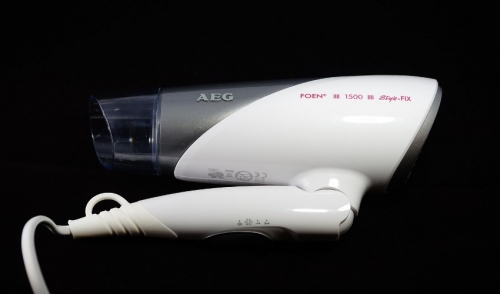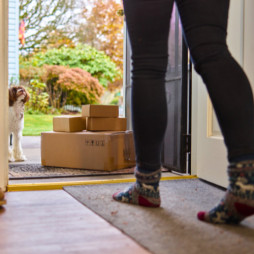{article.name}
Pet Drying Methods

- Share this:
- Share on Facebook
- Pin on Pinterest
- Tweet on Twitter
Regular baths are essential for your pet's health. Not only do baths help keep the coat and skin in good condition, but they also remove lose fur to minimize shedding, discourage fleas and reduce odors. But after the bath, how do you get your pet dry again?
Why Dry Your Pet
It may not always be necessary to dry your pet, especially if they have short fur and it is a warm day and they can dry naturally in just a short time. If you don't dry your pet, however, they may be apt to roll around to attempt to dry and settle their fur themselves, and that can create tangles and matting in their coat. Rolling and rubbing will also drive new dirt and debris deeper into their coat, undoing all the good of the bath. If you dry your pet, you avoid these potential problems and keep your pet looking great.
Ways to Dry Your Pet
There are several different ways to dry your pet, and groomers often use different drying methods depending on a specific pet's needs.
- Air Drying / Towel Drying / Natural Drying
This means just letting your pet dry off on their own. You may want to keep them in a cage or kennel until they are completely dry to minimize rolling or getting into messes right away. Mellow, well-behaved pets may be perfectly content to air dry, but it is best to gently rub your pet with a towel to remove excess moisture before letting them dry naturally. This technique is best for short-haired or smooth-coated pets that are unlikely to develop matting or heavy tangles in their fur.
- Cage Drying / Kennel Drying
Many groomers use cage or kennel drying to speed up the drying process. For this method, the pet is confined in a cage and an air blower or fan is attached to the side to direct air flow onto the pet and shorten the drying time. The dryers may have different temperature settings from no heat or cool air to moderately warm temperatures, but they should never be used on very hot settings that can distress a confined pet. The cage should be well-ventilated on all sides, including the top, to be sure there are no circulation problems that can slow drying or cause breathing problems. This method is best for smooth-coated pets with either short or medium-length fur.
- Fluff Drying / Stretch Drying / High Velocity Drying
This is the most heat-intensive drying method and involves using a warm air blower on a higher heat setting, similar to a human hair dryer. Only one small part of the animal is dried at a time, and while the fur is being dried, it is being brushed in the opposite direction of growth. This has a smoothing, straightening effect on the fur. This is ideal for pets with longer fur or naturally wavy coats. Great care is needed with this technique, however, and the hot air should never be directed into the pet's face or ears.
Choosing a Drying Method
Any of the basic drying methods can be used for most pets, though some are better suited to different coat types or fur lengths. Groomers may have preferred drying methods, or a method may be chosen based on a pet's sensitivity to noise, heat or the motions of drying off. If a pet is being prepped for a formal show, more careful drying may be necessary, and some pets do not have the temperament to tolerate more vigorous methods. At all times, the pet's safety should be kept in mind so they are not injured or stressed during drying.
About Heat Stress
It is important to watch pets for signs of heat stress and dehydration whenever they are being dried. Prolonged use of warm or hot air could overheat the animal, but there are ways to keep drying safe. First, only use a method the pet is comfortable with, and if they are anxious or fearful, stop the process. Use heat as little as possible, taking frequent breaks to cool down and reassure the animal, even rewarding them with a treat for good behavior. If a lengthy drying period is necessary, several breaks should be used and the pet should be offered water each time. Stay alert for any signs of heat stress, including excessive panting, dull eyes, pale gums, sticky saliva or listless behavior. If the pet shows signs of heatstroke, discontinue drying immediately and seek proper veterinary care.
With proper precautions and choosing an appropriate drying method to suit your pet, they can quickly recover from the indignity of a bath and be their clean, happy, dry selves again.
Special Offers

We offer FREE home delivery—no minimum purchase required! ( Print This )
Company Events
We currently do not have any events scheduled.

Comments